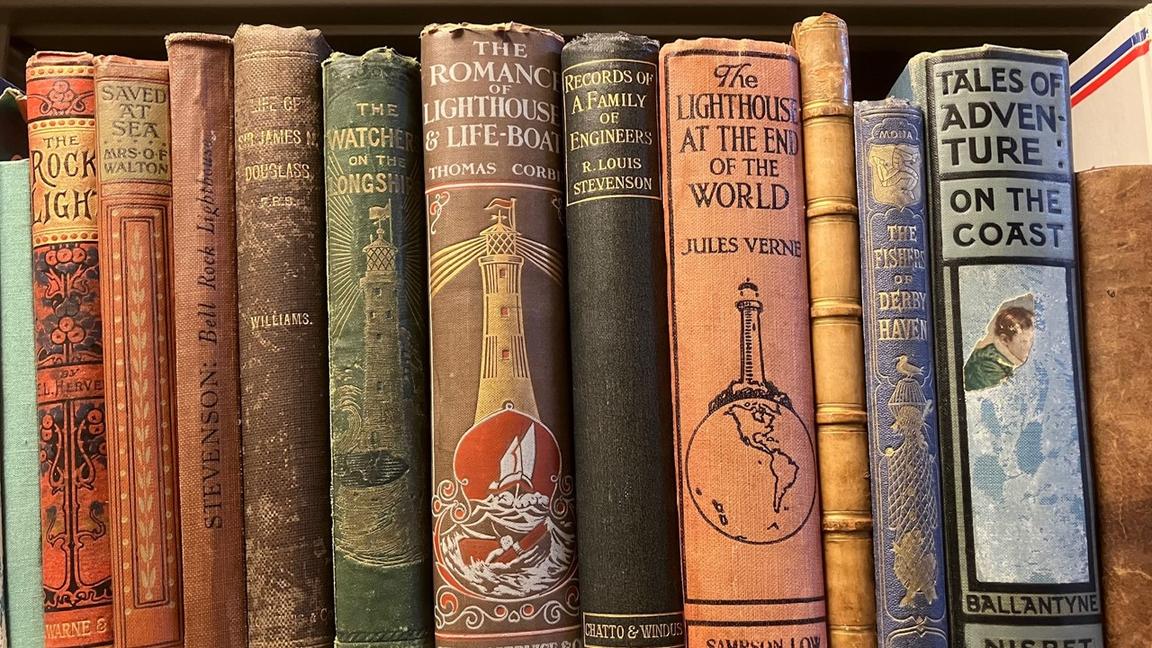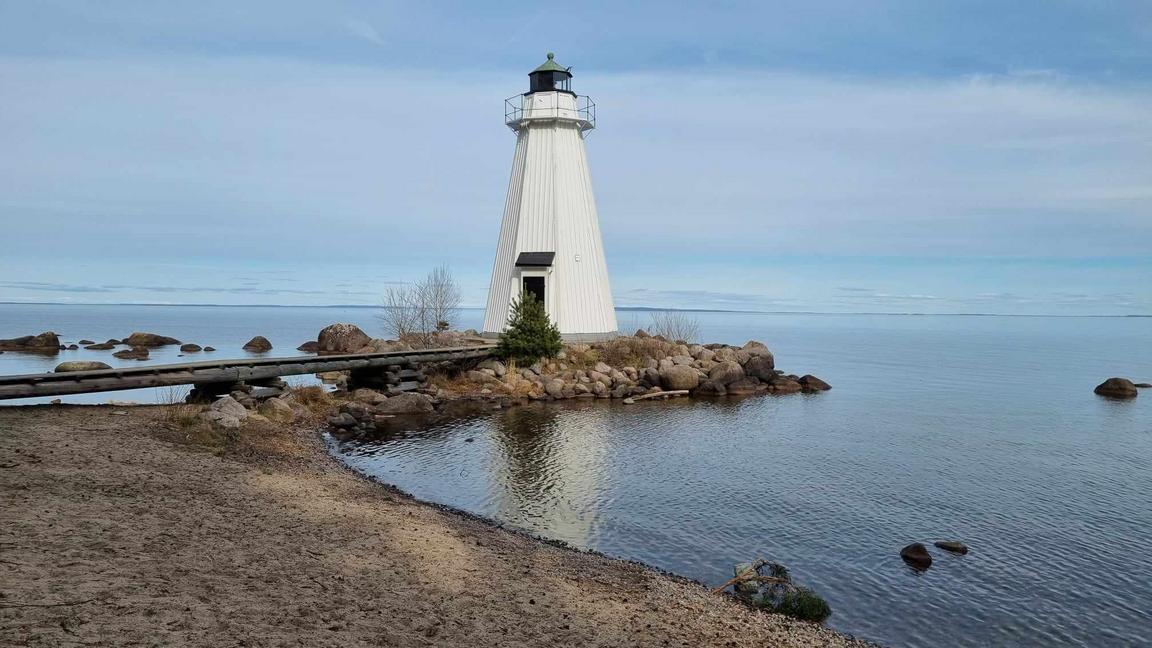Esbjörn Hillberg Lighthouse Collection
The collection includes some 2500 works. Its contents are widely varied, with specialist and technical literature, fiction, charts and tables, maps, games and ephemera concerning lighthouse and pilotage services.
About the collection
The lighthouse collection is held at the Biomedical library. At first glance, the books belong here, among the various other holdings within STEM subjects, but the lighthouse collection does not systematically instruct its reader about lighthouse maintenance. Rather, it offers an opportunity for boundless immersion in a myriad of glimpses of a life that many people have surely dreamed of. The main focus is adventure.
The collection amounts to some 40 shelf metres of books, arranged according to a geographical system of Hillberg's own choosing, with the continents and their respective countries in alphabetical order (by their Swedish names). The majority of the material is in English and Swedish, but many other languages from around the world are represented as well. The formats and material types also vary widely, and include fiction, games, maps, children's books, technical documentation, official records, novels, manuals, photo books and biographies. According to the National Maritime Museum of Sweden, it is the world's largest collection of books on lighthouse services. Esbjörn Hillberg himself is highly present in the material, which features dedications and annotations as well as letters, postcards and other ephemera.
Browsing the collection, the reader is met with a wealth of coastal lives and personages alongside the lighthouse staff; fishermen, skippers, sailors' wives, lighthouse keepers' daughters, whalers, trainoil factory workers, sailmakers, ropemakers, tar-boilers, cabinboys, cadettes, pirates, emigrants, stowaways and chained captives. The navy vessels, great and small. The mesmerising lightships were mobile structures that could also provide resecue services.
The biographies feature a surprising amount of women. Many of the authors are themselves the children of lighthouse staff, and there is a plain, heartfelt effort to document a vanishing work environment and way of life at the lighthouse stations, which were gradually left unmanned as a result of the lighthouse automation of the 20th century.
Acquisition history
The lighthouse collection was donated to the university library by Esbjörn Hillberg and was formally acquired in 2022.



Access the collection
The collection is held in the closed stacks of the Biomedical library. It is available for reading room use only.
Catalogue
The collection is currently being catalogued, and is partially available for browsing.
Via Libris
Via Supersearch
Biomedical library
Medicinaregatan 4
413 90 GOTHENBURG
Phone: 031-786 30 02

Text:
Anna Lindemark
The collection is being catalogued by Anna Lindemark.
Biography
Esbjörn Hillberg (1940–2020) founded the Swedish Lighthouse Society in 1996, and remained its chair until his passing. He lived with his wife Ulla lived on Donsö island outside Gothenburg. She, too, was instrumental to the work. She passed away in August 2025.
Hillberg originally came form the north of Sweden, and worked as an engineer and programmer. For many years, he was involved in the endeavours to create early computerized logistics systems for, among many enterprises, the Gothenburg harbour.
Read more
(Note: All resources below in Swedish.)
Interview with Esbjörn Hillberg from 2008
About Esbjörn Hillberg in Blänket 2020:4
About Esbjörn Hillberg via the Lighthouse Wiki
About the collection via the University library blog, Marginalia
About John Hay's pilotage description, via Marginalia
On some lighthouse collection ephemera, via Marginalia
Fyrar lyser upp UB:s boksamling – from GU journalen 2024:2
Suggested research topics
- An overview of the collection's contents. What is represented here, and how does it mirror the time and context of the material?
- Lighthouses as a literary motif.
- An overview of older, instructional materials concerning lighthouse and pilotage services.
- Social conditions of lighthouse staff from an historical point of view.
- Technical renderings of lighthouses in older publications.
Please contact us if you have any suggested research topics you would like to share!